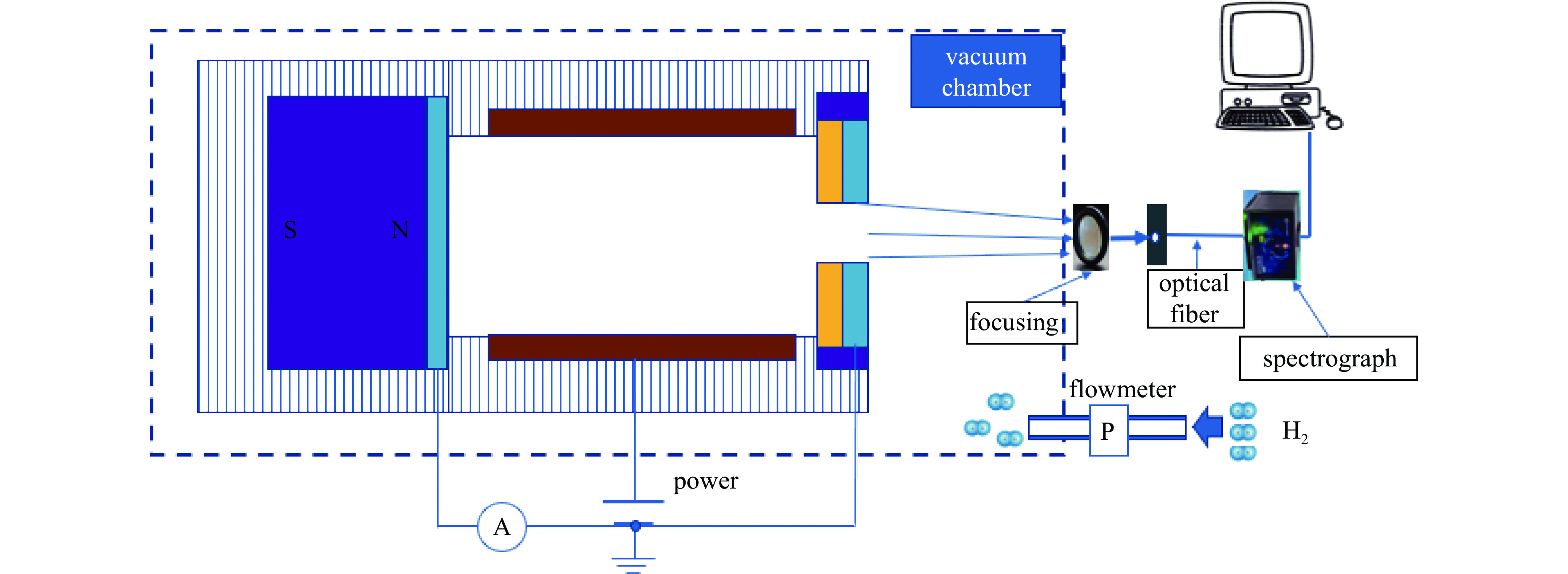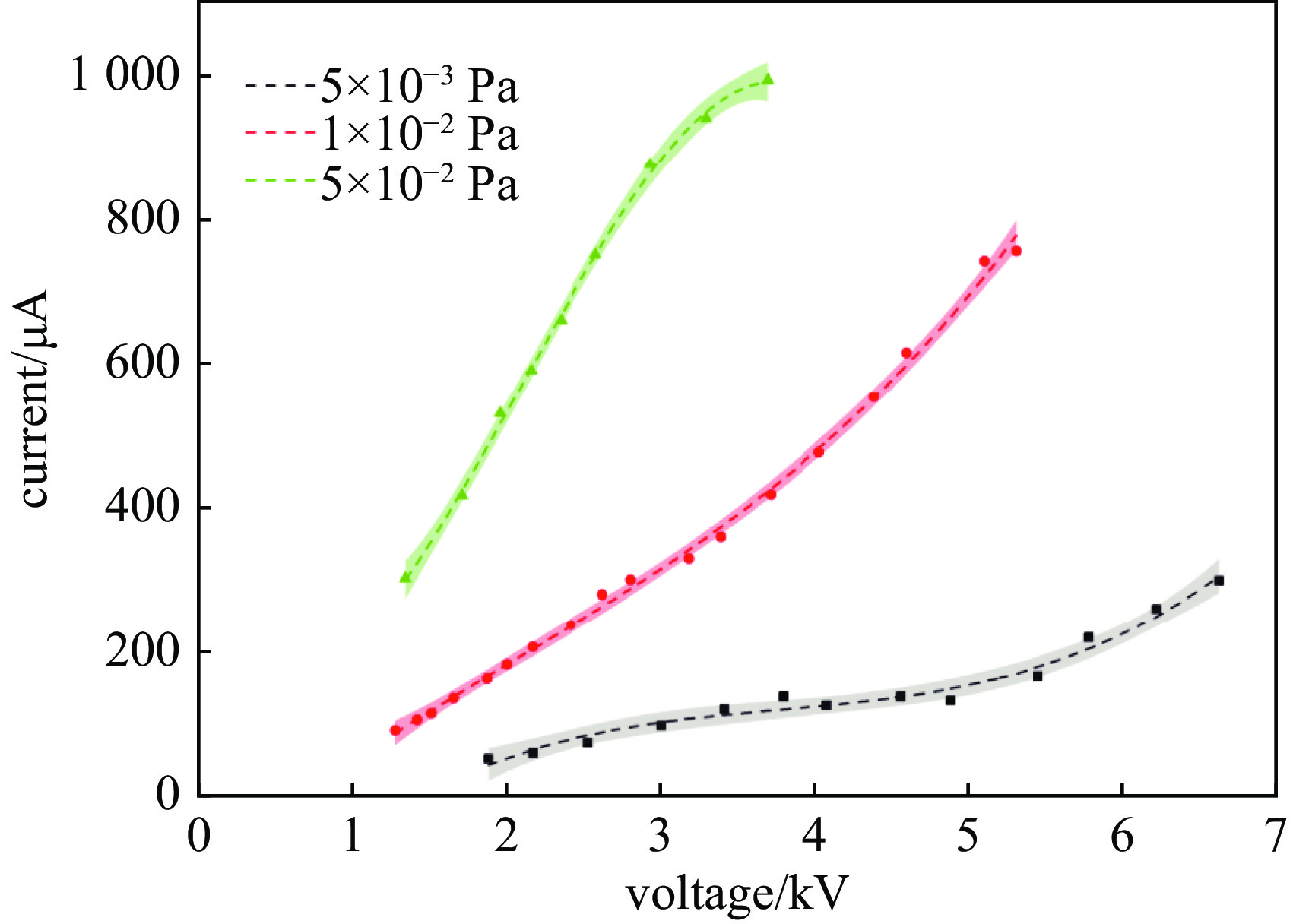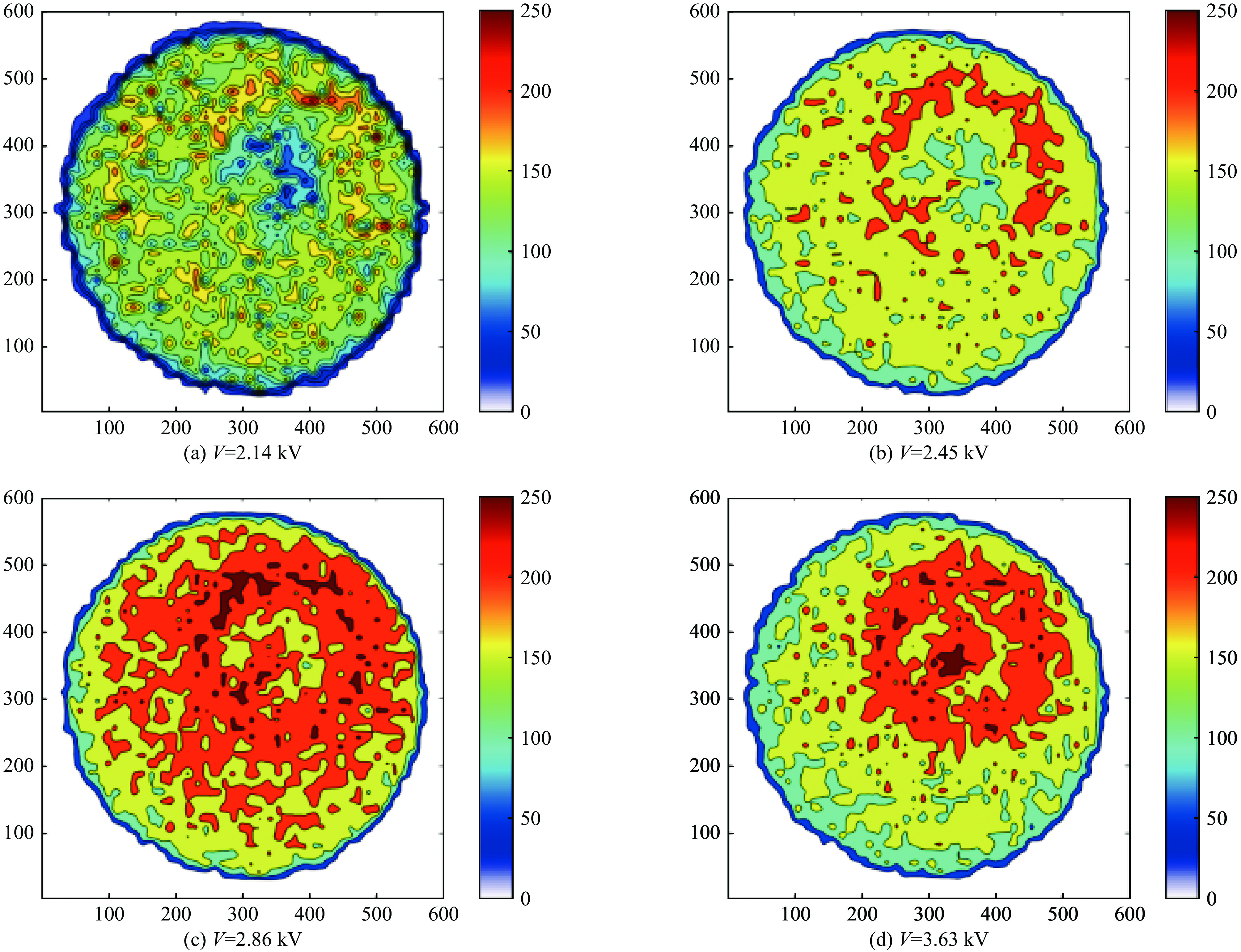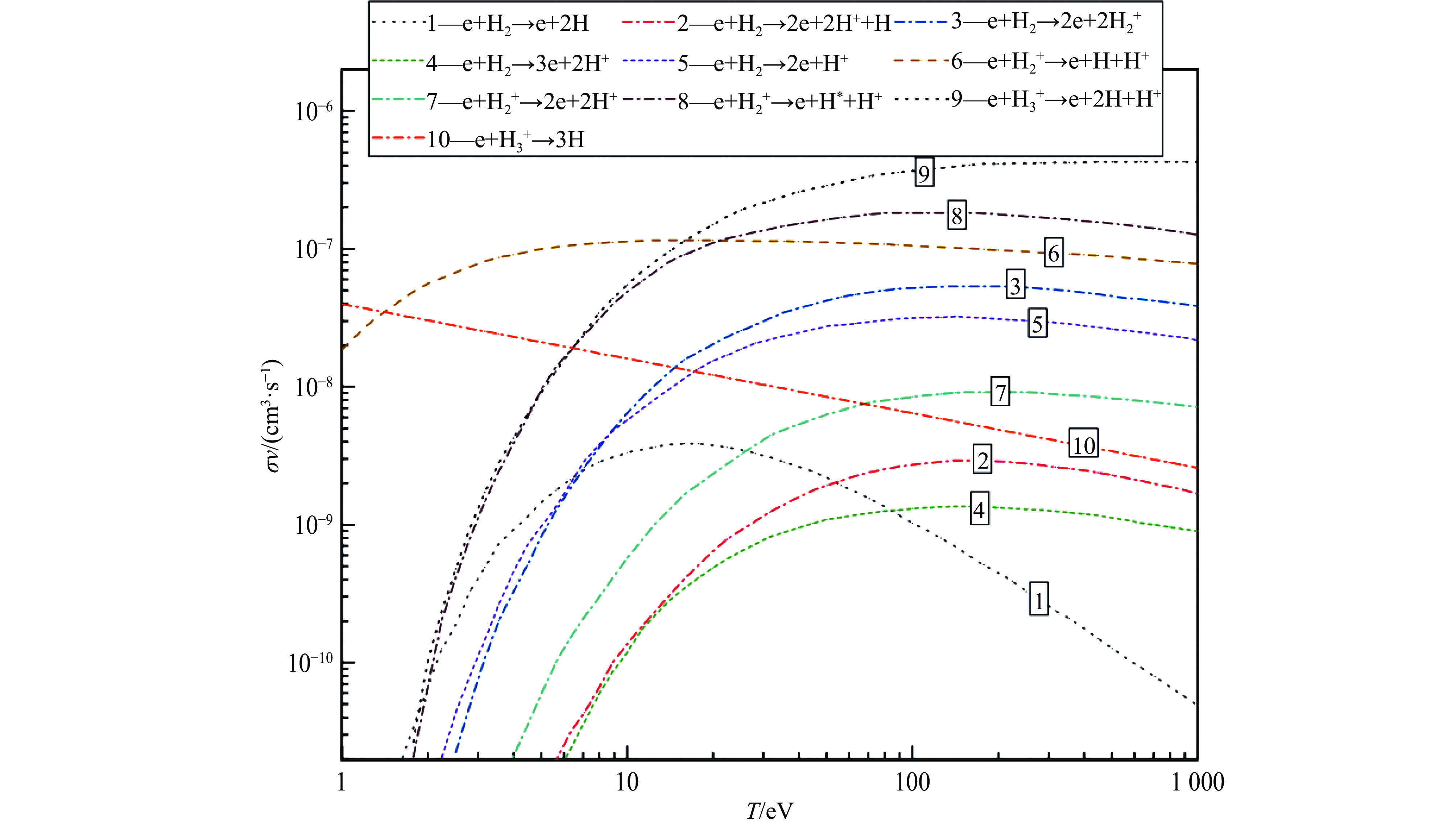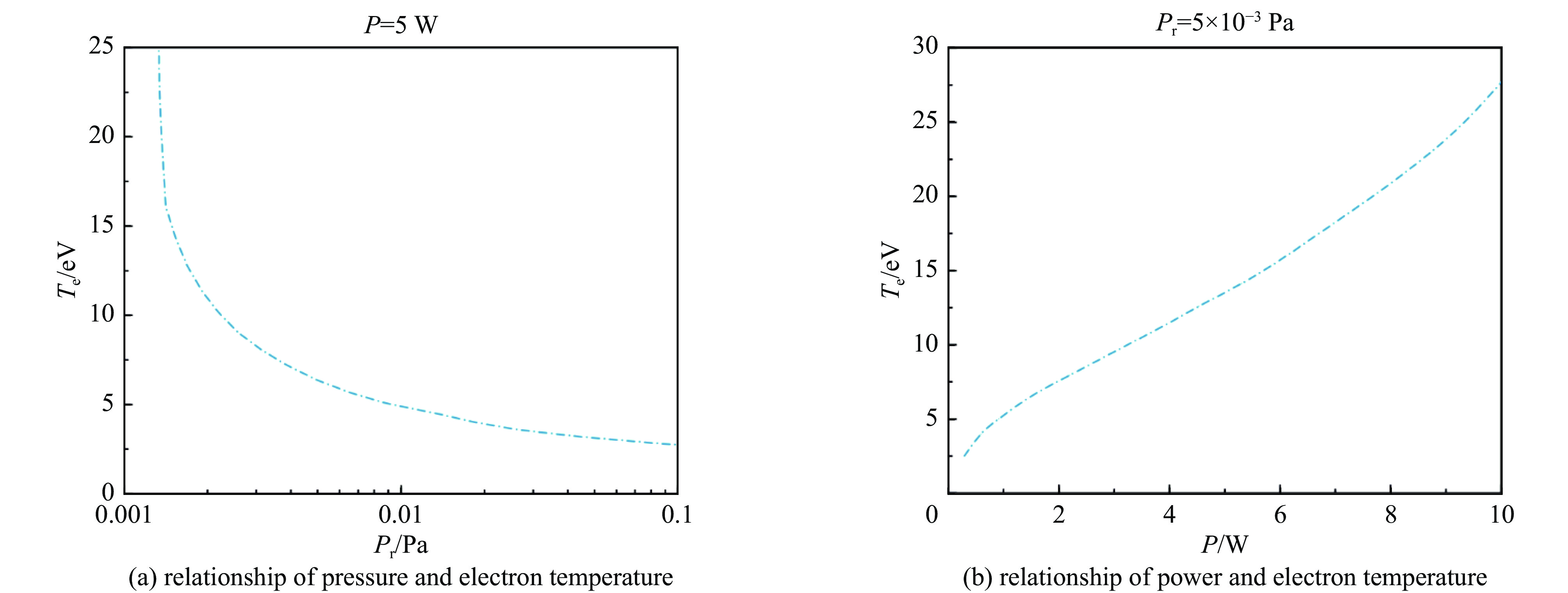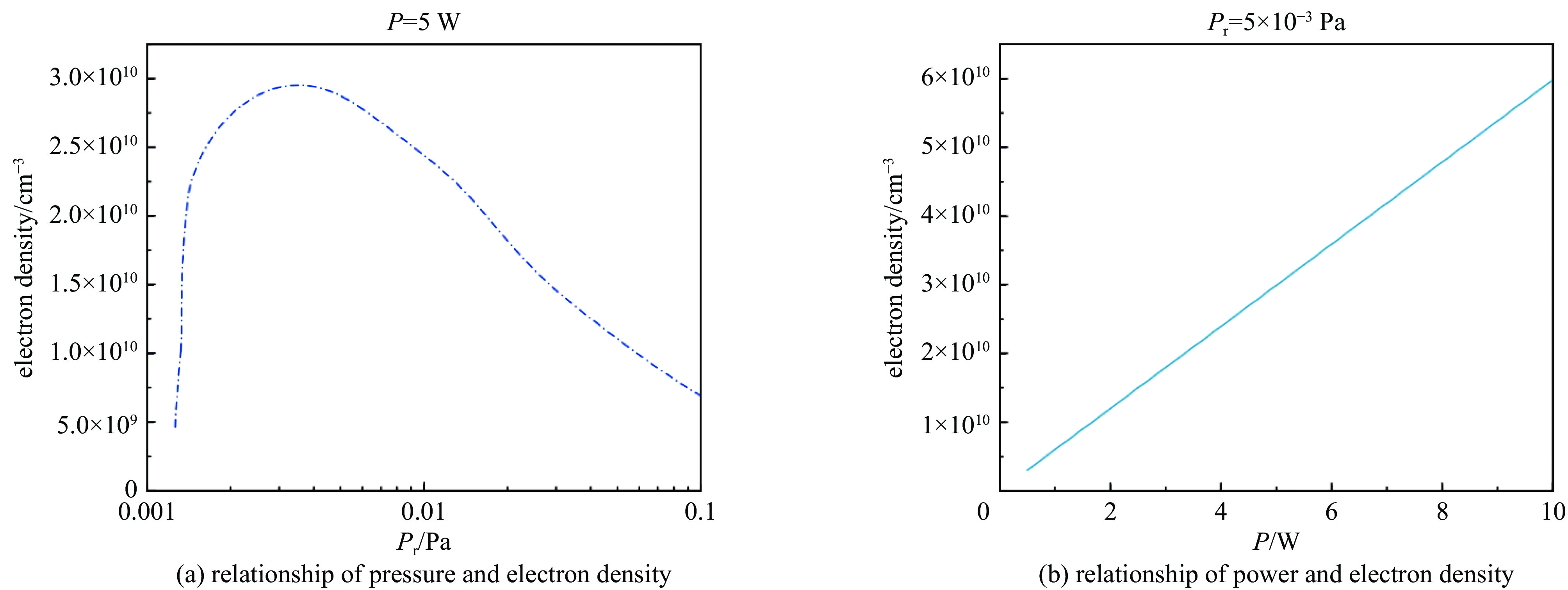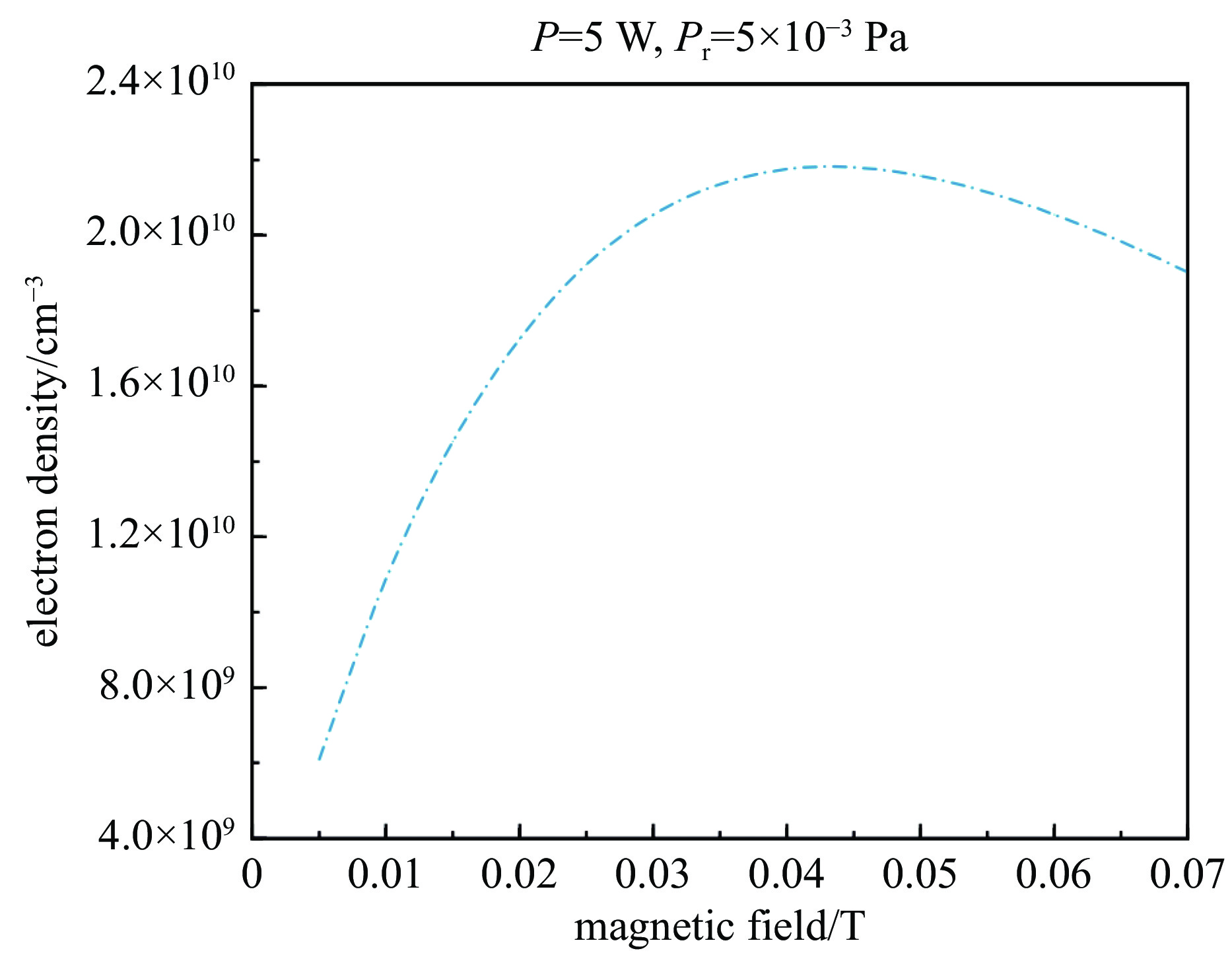Diagnosis and simulation of Penning source in associated neutron tube
-
摘要: Penning离子源因为结构简单、体积小、功耗低等优点,被广泛应用在伴随中子管中。基于实验室所用的潘宁(Penning)离子源,分析其电离时的伏-安特性;通过CCD相机拍摄观察离子源内部等离子体分布情况;采用光谱法诊断氢等离子体中电子的密度和温度。基于实验测试用的Penning离子源结构,建立H2分子碰撞电离的全局模型,分析离子源的工作参数与等离子体中电子温度和电子密度之间的关系。仿真结果表明:电子温度和电子密度与离子源的运行压强、磁场和功率密切相关;电子密度随功率增加逐渐增加、随磁场强度和压强都是先增加后减小,因此需将磁场强度控制在0.03~0.05 T,压强控制在(0.2~2)×10−2 Pa之间;电子温度随功率增加逐渐增加、随压强增加逐渐减小。通过模型可知,在Penning离子源的工作区间内,电子平均温度小于10 eV,电子密度数量级为1010 cm−3。
-
关键词:
- Penning离子源 /
- 离子诊断 /
- 氢等离子体 /
- 数值分析 /
- 全局模型
Abstract: Penning ion source has been widely used in associated neutron tube due to its simple structure, small size and low power consumption. Based on the Penning ion source used in the laboratory, the volt-ampere characteristics in the ionization process are analyzed. The distribution of plasma is observed by a CCD camera inside the ion source. The density and temperature of electrons are analyzed by spectroscopy of the hydrogen plasma. Based on the Penning ion source structure used in the laboratory, this paper establishes a global model of collision ionization of H2 molecules and analyzes the influence of working parameters of ion source to the electron temperature and electron density in the plasma. The electron density increases gradually with the increase of discharge power, and it increases first and then decreases when the magnetic field and pressure increase. It is necessary to control the magnetic field within 0.03−0.05 T, and the pressure within (0.2−2)×10−2 Pa. The electron temperature increases with the power and decreases with pressure. The model shows that the electron temperature is less than 10 eV, and the electron density is 1010 cm−3 in the operating range of Penning ion source.-
Key words:
- Penning ion source /
- ion diagnosis /
- hydrogen plasmas /
- numerical analysis /
- global model
-
表 1 计算使用的光谱学参数
Table 1. Spectral parameters used in the calculation
spectrum energy level transition $ {E_{ij}} $/eV $ {\lambda _{ij}} $/nm $ {g_{ij}} $ Aij/(A·s) spectral correction factor strength $ {{\text{H}}_\alpha } $ 3→2 1.51 656 48 4.41e7 0.001002245 24228 $ {{\text{H}}_{\text{β}} } $ 4→2 0.85 486 32 8.42e6 0.00595114 2327 collision reaction energy threshold E/eV collision type $ {\text{e}} + {{\text{H}}_2} \to {\text{e}} + 2{\text{H}} $ 9.2 dissociation $ {\text{e}} + {\text{H}}_2^{} \to 2{\text{e}} + {\text{H}}_{}^ + + {\text{H}} $ 18.0 dissociation ionization $ {\text{e}} + {\text{H}} \to 2{\text{e}} + {\text{H}}_2^ + $ 15.4 ionization $ {\text{e}} + {\text{H}}_2^{} \to 3{\text{e}} + 2{\text{H}}_{}^ + $ 23.0 dissociation ionization $ {\text{e}} + {\text{H}} \to 2{\text{e}} + {\text{H}}_{}^ + {\text{ }} $ 13.6 ionization $ {\text{e}} + {\text{H}}_2^ + \to {\text{e}} + {\text{H}} + {\text{H}}_{}^ + $ 2.4 dissociation $ {\text{e}} + {\text{H}}_2^ + \to 2{\text{e + 2}}{{\text{H}}^ + } $ 14.7 dissociation ionization $ {\text{e}} + {\text{H}}_2^ + \to {\text{e + }}{{\text{H}}^*} + {{\text{H}}^ + } $ 14.0 dissociation excitation $ {\text{e}} + {\text{H}}_3^ + \to {\text{e + }}2{\text{H}} + {{\text{H}}^ + } $ 14.0 dissociation $ {\text{e}} + {\text{H}}_3^ + \to 3{\text{H}} $ 0.0 dissociation recombination -
[1] Perot B, Perret G, Mariani A, et al. The EURITRACK project: development of a tagged neutron inspection system for cargo containers[C]//Proceedings of the SPIE 6213, Non-Intrusive Inspection Technologies. 2006: 621305. [2] Ruskov I N, Kopatch Y N, Bystritsky V M, et al. TANGRA-setup for the investigation of nuclear fission induced by 14.1 MeV neutrons[J]. Physics Procedia, 2015, 64: 163-170. doi: 10.1016/j.phpro.2015.04.022 [3] Koltick D S, Kane S Z, Lvovsky M, et al. Characterization of an associated particle neutron generator with ZnO: Ga alpha-detector and active focusing[J]. IEEE Transactions on Nuclear Science, 2009, 56(3): 1301-1305. doi: 10.1109/TNS.2008.2009536 [4] Chichester D L, Lemchak M, Simpson J D. The API 120: A portable neutron generator for the associated particle technique[J]. Nuclear Instruments and Methods in Physics Research Section B: Beam Interactions with Materials and Atoms, 2005, 241(1/4): 753-758. [5] Li Cong, Jing Shiwei, Xue Hui. Dose evaluation in a portable D–T neutron generator facility by Monte Carlo method[J]. Journal of Radioanalytical and Nuclear Chemistry, 2020, 324(2): 533-539. doi: 10.1007/s10967-020-07090-z [6] 肖坤祥, 周明贵, 谈效华. 潘宁离子源中电磁场和气压对氢气电离的影响[J]. 真空电子技术, 2003(6):26-28,38 doi: 10.3969/j.issn.1002-8935.2003.06.007Xiao Kunxiang, Zhou Minggui, Tan Xiaohua. The influences of electromagnetic field and pressure on hydrogen ionization in Penning ion source[J]. Vacuum Electronics, 2003(6): 26-28,38 doi: 10.3969/j.issn.1002-8935.2003.06.007 [7] 石磊, 肖坤祥, 钱沐杨. 带电粒子在微型潘宁离子源中的动力学仿真[C]//中国核科学技术进展报告(第三卷)——中国核学会2013年学术年会论文集第6册(核物理分卷、计算物理分卷、粒子加速器分卷). 2013Shi Lei, Xiao Kunxiang, Qian Muyang. Dynamic simulation of the charged particles in miniature Penning ion source[C]//Progress Report on China Nuclear Science and Technology. 2023 [8] Noori H, Khodabakhshi E, Jõgi I. The effects of uniform versus non-uniform magnetic field on characteristics of a Penning ion source[J]. Nuclear Instruments and Methods in Physics Research Section A: Accelerators, Spectrometers, Detectors and Associated Equipment, 2020, 962: 163667. doi: 10.1016/j.nima.2020.163667 [9] Yang Zhen, Dong Pan, Wang Tao, et al. Studies on hydrogen plasma in a Penning ion source by optical emission spectroscopy[J]. IEEE Transactions on Plasma Science, 2013, 41(10): 2941-2945. doi: 10.1109/TPS.2013.2281055 [10] 李卓希, 杨洪广. 中子管用潘宁离子源电离特性研究[J]. 电子世界, 2019(11):31-32Li Zhuoxi, Yang Hongguang. Study on the ionization characteristics of Penning ion source in neutron tubes[J]. Electronics World, 2019(11): 31-32 [11] 武文斌, 彭士香, 张艾霖, 等. 微型电子回旋共振离子源的全局模型[J]. 物理学报, 2022, 71:145204 doi: 10.7498/aps.71.20212250Wu Wenbin, Peng Shixiang, Zhang Ailin, et al. Global model of miniature electron cyclotron resonance ion source[J]. Acta Physica Sinica, 2022, 71: 145204 doi: 10.7498/aps.71.20212250 [12] 李杰, 董攀, 王韬, 等. 磁场调控型离子源的设计与实验[J]. 强激光与粒子束, 2022, 34:074001 doi: 10.11884/HPLPB202234.210515Li Jie, Dong Pan, Wang Tao, et al. Design and experimental study of magnetic field regulating ion source[J]. High Power Laser and Particle Beams, 2022, 34: 074001 doi: 10.11884/HPLPB202234.210515 [13] 董攀, 龙继东, 陈德彪, 等. 强流激光离子源中的等离子体参数诊断[J]. 强激光与粒子束, 2016, 28:055103 doi: 10.11884/HPLPB201628.055103Dong Pan, Long Jidong, Chen Debiao, et al. Diagnosis of plasma in high current laser ion source[J]. High Power Laser and Particle Beams, 2016, 28: 055103 doi: 10.11884/HPLPB201628.055103 [14] 董攀, 龙继东, 杨振, 等. Penning型负氢离子源诊断[J]. 强激光与粒子束, 2011, 23(9):2503-2506 doi: 10.3788/HPLPB20112309.2503Dong Pan, Long Jidong, Yang Zheng, et al. Diagnosis of Penning-type negative hydrogen ion source[J]. High Power Laser and Particle Beams, 2011, 23(9): 2503-2506 doi: 10.3788/HPLPB20112309.2503 [15] Chan C F, Burrell C F, Cooper W S. Model of positive ion sources for neutral beam injection[J]. Journal of Applied Physics, 1983, 54(11): 6119-6137. doi: 10.1063/1.331948 [16] Tawara H, Itikawa Y, Nishimura H, et al. Cross sections and related data for electron collisions with hydrogen molecules and molecular ions[J]. Journal of Physical and Chemical Reference Data, 1990, 19(3): 617-636. doi: 10.1063/1.555856 [17] Schmidt M. Elementary processes in hydrogen-helium plasmas cross sections and reaction rate coefficients. by R. K. Janev, W. D. Langer, K. Evans, Jr. , D. E. Post, Jr. Springer-Verlag Heidelberg, New York, London, Paris, Tokyo (Springer Series on Atoms and Plasmas Vol. 4) p.326 Fig.107[J]. Contributions to Plasma Physics, 1989, 29: 10. [18] Huh S Y, Kim N K, Jung B K, et al. Global model analysis of negative ion generation in low-pressure inductively coupled hydrogen plasmas with bi-Maxwellian electron energy distributions[J]. Physics of Plasmas, 2015, 22: 033506. doi: 10.1063/1.4914088 [19] Mamedov N V, Kolodko D V, Sorokin I A, et al. Energy & mass-charge distribution peculiarities of ion emitted from Penning source[J]. Journal of Physics: Conference Series, 2017, 830: 012063. doi: 10.1088/1742-6596/830/1/012063 [20] 陈宇航, 龙继东, 刘尔祥, 等. 磁场引起的潘宁离子源阻抗变化研究[J]. 强激光与粒子束, 2016, 28:045107 doi: 10.11884/HPLPB201628.125107Chen Yuhang, Long Jidong, Liu Erxiang, et al. Impact of magnetic field on Penning discharge[J]. High Power Laser and Particle Beams, 2016, 28: 045107 doi: 10.11884/HPLPB201628.125107 [21] Jin Dazhi, Yang Zhonghai, Xiao Kunxiang, et al. Diagnosis of hydrogen plasma in a miniature Penning ion source by double probes[J]. Plasma Science and Technology, 2009, 11(1): 48-51. doi: 10.1088/1009-0630/11/1/10 [22] Yan Fei, Jin Dazhi, Chen Lei, et al. Deuterium plasma diagnosis in a miniature penning ion source by a single probe[J]. IEEE Transactions on Plasma Science, 2018, 46(7): 2546-2549. doi: 10.1109/TPS.2018.2797362 -





 下载:
下载:
